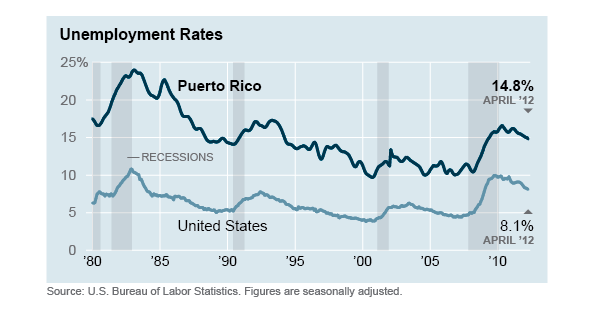- Improving Labor Market Opportunities
Puerto Rico’s labor force participation rate is among the lowest in the world, with less than half of eligible workers participating in the formal economy. Moreover, the unemployment rate has been persistently well above the U.S. mainland’s, and is especially high for the young and less educated.

- Developing Human Capital
Although the Island’s workforce overall is among the world’s most educated, Puerto Rico still lags the U.S. mainland, and there is a particularly high abundance of low-skilled workers. There are also growing concerns that the quality of the education system has deteriorated, especially at the primary and secondary levels.
- Reducing the Costs of Doing Business
The business environment in Puerto Rico makes it costly and cumbersome to establish and grow new businesses and expand existing ones. In particular, regulations, the elevated cost of electricity, and an underdeveloped and costly transportation infrastructure are barriers to a more dynamic environment.
- Mobilizing Finance for Business Development and Growth
Weak banks and limited alternatives to bank funding have reduced credit availability to local businesses.
- Lowering Dependence on a Shrinking Industry
Tax incentives led to an outsized presence of the pharmaceuticals industry on the Island. The incentives have been phased out and employment in the industry has declined. Going forward, there appears to be only a limited prospect for the sector to be a driver of growth.
|














